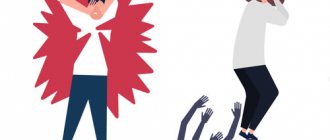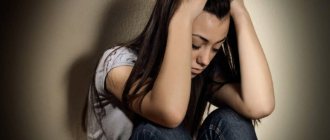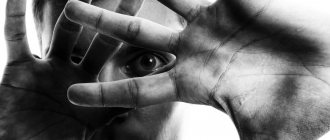The prevalence of generalized anxiety disorder (GAD) is 6%. The median age of onset was 31 years, and the mean age of onset was 32.7 years. Prevalence in children is 3%, in adolescents – 10.8%. The age of onset of the disease in children and adolescents is between 10 and 14. There is evidence that GAD is 2-3 times more common in women than in men, and that GAD is more common in older people. This disorder often goes unrecognized and less than a third of patients receive adequate treatment. The situation is complicated by the fact that it may be necessary to separate GAD in children from GAD in adults.
GAD is associated with functional impairment and decreased quality of life. When initially visiting a doctor, 60-94% of patients with GAD complain of painful physical symptoms and in 72% of cases this is the reason for seeking medical help.
We present to your attention a review translation of clinical guidelines for the treatment of generalized anxiety disorder, compiled by experts from the Canadian Anxiety Disorders Association. The translation was prepared jointly by the scientific Internet portal “Psychiatry & Neuroscience” and the Psychiatry Clinic “Doctor SAN” (St. Petersburg).
Diagnosis
GAD is characterized by increased anxiety and worry (most days during the past six months) about a variety of events and activities, such as school or work. In addition, GAD is associated with restlessness, muscle tension, fatigue, problems concentrating, irritability and sleep disturbances.
DSM-5 criteria for diagnosing GAD
- Excessive anxiety and worry (anxious anticipation) about a variety of events and activities, such as school or work.
- The person has difficulty gaining control over anxiety
- Excessive anxiety and worry are associated with at least three of the following symptoms, affecting a person most days for at least six months: Restlessness or feeling on edge, fatigue, difficulty concentrating, irritability, muscle tension or sleep disturbances
Symptoms
The clinical manifestations of anxious depression are extremely diverse and vary depending on the character traits and ideological views of the patient. Common features of TDR traditionally include:
- Unfounded fears . Patients are not able to reasonably explain why in the near future they “must” die, go bankrupt, witness the Apocalypse, and so on.
- Personal changes . Patients with TDD demonstrate previously absent nervousness, tearfulness, constant anxiety, and a desire to play it safe in everything. Also in most cases there is a noticeable decrease in self-esteem.
- Narrowing the circle of interests . The scope of interest is limited to the subject of the phobia: for example, when they are afraid of losing their job, patients constantly study job advertisements “just in case,” and when they are afraid of getting sick, they study medical encyclopedias. Former interests and hobbies lose their former attractiveness.
- Sadness of mood . The predominant mood pattern of patients with TDD can be described as sadness, fatigue, or detachment. The conversation is dominated by the theme of the purposelessness of any activity or life itself.
- Somatic disorders . Patients experience tachycardia and pain in the heart, digestive and stool disorders, high blood pressure, general weakness and rapid fatigue, lack of sexual desire, headaches and dizziness, insomnia, a feeling of suffocation, frequent urination, sweating, tremors, muscle tension and convulsions.
Psychological help
Meta-analyses clearly show that CBT significantly reduces GAD symptoms. A small number of studies have compared the effects of CBT and pharmacotherapy, which have shown approximately the same effect size. Individual and group psychotherapy are equally effective in reducing anxiety, but individual psychotherapy may be more effective in reducing anxiety and depressive symptoms.
Psychotherapy intensity was assessed in a meta-analysis of 25 studies. For reducing anxiety, a course of psychotherapy lasting less than eight sessions is as effective as a course lasting more than eight sessions. In reducing anxiety and depression, more intensive courses are more effective than courses with a small number of sessions. Several studies have shown the benefits of ICBT.
The meta-analysis found no significant difference between the effects of CBT and relaxation therapy. However, more recent research suggests limited effectiveness of relaxation therapy. A large RCT found that balneotherapy, a relaxation therapy with spa treatments, was better than SSRIs in reducing anxiety; however, there are doubts about the validity of the study.
The effectiveness of behavioral psychotherapy based on acceptance, metacognitive psychotherapy, CBT aimed at correcting the perception of uncertainty, mindfulness-based cognitive therapy has been proven.
Psychodynamic psychotherapy can also provide results, but at the moment there is no clear evidence of its effectiveness.
Adding interpersonal and emotional-process therapy to CBT does not provide significant benefits compared to CBT without the addition. A preliminary conversation before starting a CBT course helps reduce resistance to therapy and improve compliance - this strategy is especially useful in severe cases.
Treatment options
Comprehensive treatment of anxiety and depressive disorders, including psychotherapy, physiotherapy and medication, has proven to be the most effective.
Psychotherapy
The best results in the treatment of anxious depression are demonstrated by cognitive behavioral psychotherapy, during which the doctor teaches patients the skills of in-depth analysis of their views, which allows patients to independently identify erroneous illogical reasoning, and also helps to form correct behavioral stereotypes.
Other types of psychotherapy used to treat SDD include:
- Gestalt therapy . The patient is taught the ability to lead a fully conscious life, due to which most unconscious destructive experiences are deprived of the chance to develop.
- Family psychotherapy . Correction of the mental state is achieved by improving the family atmosphere. Most applicable for the treatment of anxious depression in children and adolescents.
- Hypnotic suggestion . The doctor gives the patient the necessary settings for subsequent correction of erroneous forms of behavior.
Drug treatment
Depending on the form of TDR, the patient may be prescribed the following groups of drugs:
- Antidepressants . Effective in treating apathy and feelings of hopelessness, improve overall emotional mood, normalize sleep and appetite.
- Beta blockers . Indicated for severe forms of somatic disorders.
- Tranquilizers . They help reduce the intensity of feelings of fear and anxiety, reduce the frequency of panic attacks, and eliminate most somatic disorders.
Physiotherapy
To improve brain activity and general well-being, patients are prescribed massage, as well as certain physical procedures:
- Electrosleep . Removing foci of increased excitation in the cerebral cortex by using low-frequency electric current.
- Electroconvulsive therapy . Simulation of brain activity by electric current discharges of a given intensity.
- Darsonval . Treatment of the scalp with a weak high-frequency current to improve blood circulation.
- Oxygen therapy . Inhalation of pure oxygen (O₂) to quickly stimulate blood circulation in the brain and improve the general condition of the patient.
- Acupuncture . Stimulation of certain reflexogenic zones to improve the functioning of specific internal organs and systems or the general health of the entire body.
Combination of psychotherapy and pharmacological treatment
Few data are available on the use of combinations of psychotherapy and pharmacological treatment. A meta-analysis showed that the combination of pharmacological treatment with CBT was more effective than CBT alone when comparing results immediately after treatment, but not after six months. Data are available from studies comparing the combination of diazepam or buspirone plus CBT with CBT alone. The small number of studies comparing pharmacotherapy with pharmacotherapy plus psychotherapy has produced conflicting results.
There is currently no rationale for combining CBT with pharmacotherapy. But, as with other anxiety disorders, if the patient does not improve with CBT, the use of pharmacotherapy is recommended. Likewise, if pharmacotherapy does not improve, then CBT can be expected to help. Meta-analyses and several RCTs suggest that psychotherapy benefits are maintained 1-3 years after treatment.
Treatment for GAD
Psychotherapy
The recommended type of psychotherapy for generalized anxiety disorder is cognitive behavioral therapy (CBT). The guidelines cite meta-analyses of various studies on the effectiveness of cognitive behavioral therapy: CBT significantly reduces GAD symptoms and is noticeably more effective than placebo. The effectiveness of CBT for GAD is comparable to the effectiveness of drug therapy.
Individual, group and digital forms of therapy (online counseling) are equally effective in reducing symptoms, but individual therapy may lead to earlier reductions in symptoms of anxiety and depression.
Cognitive behavioral therapy for GAD is markedly more effective than placebo.
There is not enough research on the effectiveness of other psychotherapies for GAD to recommend them.
The duration of a CBT course for GAD can vary and depends on the severity of the disorder, comorbidity with other diseases, the experience of the psychotherapist and the characteristics of the client. The psychotherapist evaluates all factors and informs the client of the estimated duration of therapy.
Psychotherapy focuses on physical, cognitive and behavioral symptoms, as well as relapse management. Typical CBT programs for GAD have three phases and multiple components. I cannot describe the protocol in full here, since a specialist always adapts it to a specific client.
The first stage is diagnosis and formulation of the case; providing general information about generalized anxiety disorder with rationale for treatment; identifying factors that promote or interfere with therapy; Teaching the client to notice his normal anxiety.
The second step in treating generalized anxiety disorder is to reduce the severity of GAD symptoms.
For physical symptoms, these include muscle relaxation, breathing exercises and cardio exercises.
For cognitive symptoms, this means identifying and working with cognitive distortions, underestimating the ability to cope with problems, intolerance of uncertainty, and beliefs about the benefits of worry. Cognitive distortions include, for example, catastrophizing—an overestimation of the likelihood that something bad will definitely happen. Uses structured problem solving techniques to convert concerns into action plans when necessary.
Cognitive distortions include, for example, catastrophizing - an overestimation of the likelihood that something bad will definitely happen.
Behavioral intervention involves encouraging patients to develop non-avoidant behavior, using graded exposure and behavioral experiments to gain new life experiences.
The third and final stage is relapse management. Completing a course of pharmacotherapy and psychotherapy does not guarantee the absence of relapses. Therefore, the goal of psychotherapy for GAD is also to teach relapse prevention and self-help. This stage includes identifying strategies for maintaining health, identifying early signs of relapse, and creating a plan to deal with such signs.
Symptoms are periodically monitored throughout the psychotherapy process.
Pharmacological treatment
SSRIs, SSRIs, TCAs, benzodiazepines, pregabalin, quetiapine XR have been proven effective in the treatment of GAD.
First line
Antidepressants (SSRIs and SSRIs): RCTs show the effectiveness of escitalopram, sertraline and paroxetine, as well as duloxetine and venlafaxine XR. The effectiveness of SSRIs and SSRIs is the same. There is evidence that escitalopram is less effective than venlafaxine XR or quetiapine XR.
Other antidepressants: There is evidence that agomelatine is as effective as escitalopram.
Pregabalin: Pregabalin is as effective as benzodiazepines (level 1 evidence).
Second line
Benzodiazepines: Alprazolam, bromazepam, diazepam and lorazepam have been shown to be effective (level 1 evidence). Although the level of evidence is high, these drugs are recommended as second-line treatment and usually for short-term use due to side effects, dependence and withdrawal symptoms.
TCAs and other antidepressants: Imipramine is as effective as benzodiazepines in the treatment of GAD (level 1 evidence). But due to side effects and potentially toxic overdose, imipramine is recommended as a second-line treatment. There is little data on bupropion XL, but there is a study in which it was shown to be as effective as escitalopram (first-line agent), so it can be used as a second-line agent.
Vortioxetine, a so-called serotonin modulator, acts on different serotonin receptors. Research on the effectiveness of vortioxetine is inconsistent, but there is evidence to support its use for GAD.
Quetiapine XR: Quetiapine XR has proven efficacy and is equivalent to that of antidepressants. But quetiapine is associated with weight gain, sedation, and a higher rate of treatment discontinuation due to side effects than antidepressants. Because of problems associated with tolerability and safety of atypical antipsychotics, this drug is recommended as a second-line treatment for patients who cannot take antidepressants or benzodiazepines.
Other drugs: Buspirone has been shown to be as effective as benzodiazepines in several RCTs. There is insufficient data to compare buspirone with antidepressants. Due to its lack of effectiveness in clinical practice, buspirone should be classified as a second-line drug.
Hydroxyzine has shown efficacy close to that of benzodiazepines and buspirone, but there is insufficient clinical experience with the use of this drug for GAD.
Third line
Third-line drugs include drugs with poorly studied efficacy, side effects, and rarely used as a primary treatment for GAD.
Additional drugs
The adjunctive strategy has been studied in patients who have not responded adequately to SSRI treatment and may be used in cases of refractory GAD.
Second-line add-on drugs: Pregabalin, as an adjunct to the main drug, has been shown to be effective in treating patients who have not responded to previous treatment (level of evidence: 2).
Third-line add-on drugs: A meta-analysis showed no improvement with atypical antipsychotics as add-on drugs, but did show an increase in treatment failure. Studies of the effectiveness of risperidone and quetiapine as adjunctive agents show conflicting results.
Due to weak evidence of effectiveness, risk of weight gain, and metabolic side effects, atypical antipsychotics should be reserved for refractory cases of GAD and, with the exception of quetiapine XR, used only as an adjunct to the primary drug.
A drug | Level of evidence |
| SSRIs | |
| Escitalopram | 1 |
| Paroxetine | 1 |
| Sertraline | 1 |
| Fluoxetine | 3 |
| Citalopram | 3 |
| SSRI | |
| Duloxetine | 1 |
| Venlafaxine | 1 |
| TCA | |
| Imipramine | 1 |
| Other antidepressants | |
| Agomelatine | 1 |
| Vortioxetine | 1 (conflicting data) |
| Bupropion | 2 |
| Trazadone | 2 |
| Mirtazapine | 3 |
| Benzodiazepines | |
| Alprazolam | 1 |
| Bromazepam | 1 |
| Diazepam | 1 |
| Lorazepam | 1 |
| Anticonvulsants | |
| Pregabalin | 1 |
| Divalproex | 2 |
| Tiagabine | 1 (negative result) |
| Pregabalin as an adjunctive drug | 2 |
| Other drugs | |
| Buspirone | 1 |
| Hydroxyzine | 1 |
| Pexacerfont | 2 (negative result) |
| Propranolol | 2 (negative result) |
| Memantine | 4 (negative result) |
| Pindolol as an additive drug | 2 (negative result) |
| Atypical antipsychotics | |
| Quetiapine | 1 |
| Quetiapine as an add-on drug | 1 (conflicting data) |
| Risperidone as an add-on drug | 1 (conflicting data) |
| Olanzapine as an add-on drug | 2 |
| Aripiprazole as an add-on drug | 3 |
| Ziprasidone as monotherapy or in combination | 2 (negative result) |
| First line: Agomelatine, duloxetine, escitalopram, paroxetine, pregabalin, sertraline, venlafaxine Second line: Alprazolam*, bromazepam*, bupropion, buspirone, diazepam, hydroxyzine, imipramine, lorazepam*, quetiapine*, vortioxetine Third line: Citalopram, divalproex, fluoxetine, mirtazapine, trazodone Additional drugs (second line): Pregabalin Additional drugs (third line): Aripiprazole, olanzapine, quetiapine, risperidone Not recommended as adjunct drugs: Ziprasidone Not recommended: Beta blockers (propranolol), pexacefront, tiagabine *These drugs have their own mechanisms of action, effectiveness and safety profile. Benzodiazepines are best used as second-line drugs in most cases unless there is a risk of abuse; It is better to postpone bupropion XL for later. Quetiapine XR is a good choice in terms of effectiveness, but given the metabolic problems associated with atypical antipsychotics, it is best reserved for patients who cannot be prescribed antidepressants or benzodiazepines. |
Causes
An important factor determining the possible development of an anxiety disorder is predisposition. Approximately 20% of people are born with a special mood in the nervous system, which predetermines such a personality trait as increased anxiety. These individuals are at high risk of developing anxiety disorders. The following conditions can trigger painful anxiety:
- Overwork : chronic stress, lack of sleep, starvation and exhaustion.
- Mental trauma.
- Hormonal disorders : hyperthyroidism, hypothalamic syndrome, increased activity of the adrenal glands.
- Diseases of the nervous system : encephalopathy, infections of brain tissue.
- Poisoning . Abuse of alcohol, drugs, sleeping pills or sedatives.
- Mental disorders : phobias, depression, neuroses, psychosomatic diseases, schizophrenia spectrum disorders.
Maintenance pharmacological therapy
A meta-analysis showed that long-term use of SSRIs (6–12 months) was effective in preventing relapse (odds ratio for relapse = 0.20).
Relapse after 6-18 months of duloxetine, escitalopram, paroxetine and venlayaxin XR was observed in 10-20% of cases, compared with 40-56% in the control group. Continuing pregabalin and quetiapine XR also prevents relapse after 6-12 months.
Long-term RCTs have shown that escitalopram, paroxetine and venlafaxine XR help maintain benefit over six months.









